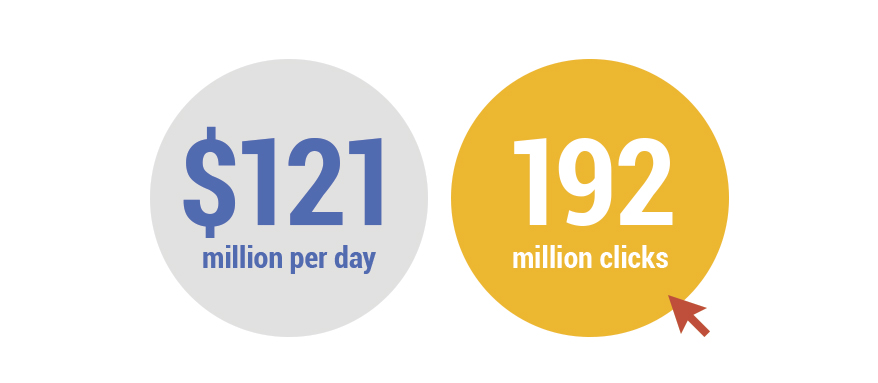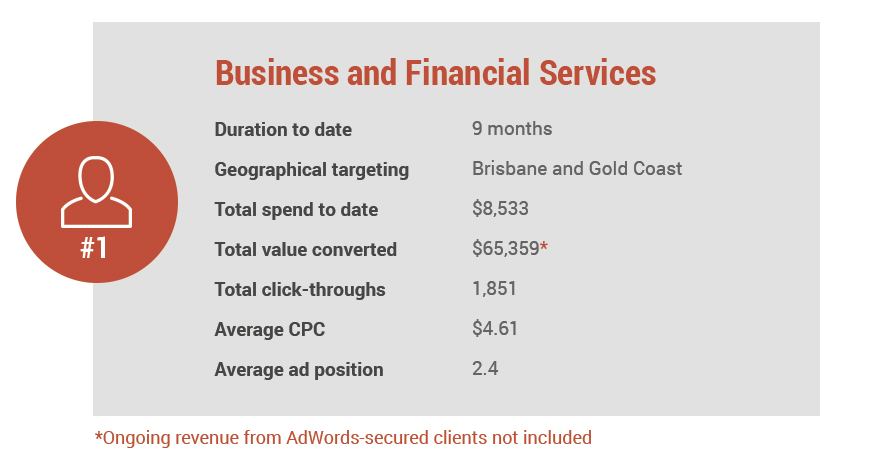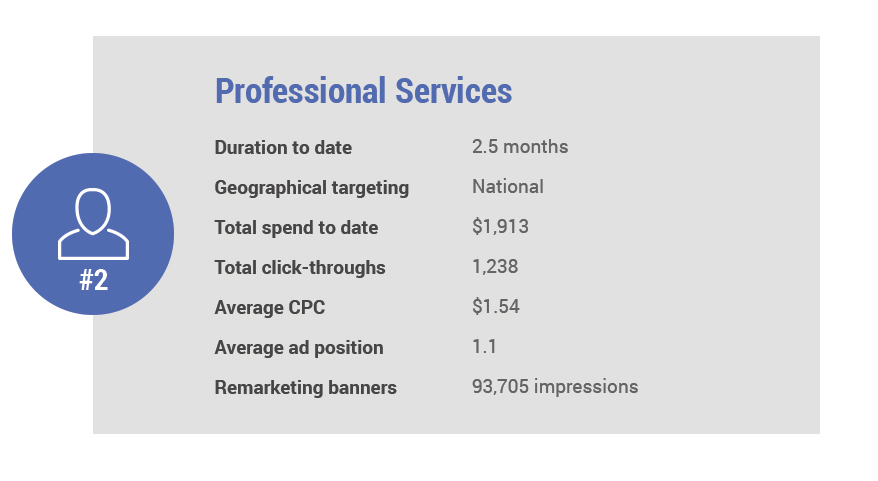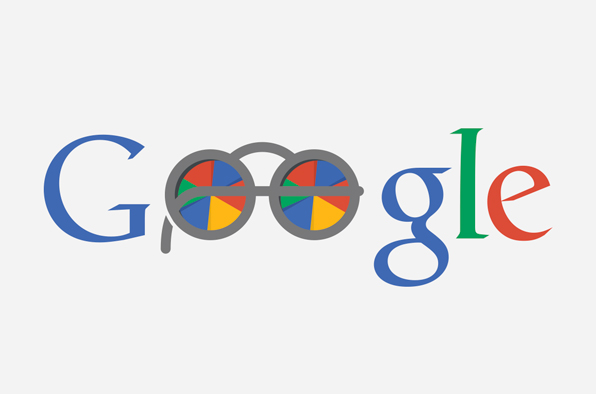 03
Mar, 2015
03
Mar, 2015
This month, we’re shining the light on Google AdWords: the good, the bad, the potential, and the potential waste.
That’s right. AdWords doesn’t always work, and it isn’t always a good choice. But sometimes it does, and sometimes it is.
In this article we’ll give you some real-life examples of what’s possible when you get it right. We’ll discuss a few things your local SEO lumberjack probably isn’t telling you, and we’ll offer our honest advice on what you need to consider when deciding to go ahead with it or not.
AdWords: A quick refresher
If you’re reading this blog, you’ve probably heard of Google AdWords before. If you haven’t, think of it like paying for TV commercials, but on the internet. And Google is the only channel anyone watches.
Here’s a quick refresher on how it works:
1. Google sells ad space on its search result pages (SERPs), and on other ad-enabled websites.
2. These ads appear at the very top and down the sides of SERPs.
3. You (the advertiser) choose which search terms (what people type in) trigger your ads to be displayed.
4. Ads are marked with a little yellow box next to them that says ‘Ad’.
5. You only pay for these ads when someone clicks on them (a.k.a. Pay Per Click advertising).
6. You can also bid for space (the more you’re willing to pay per click, the more likely it is that your ad appears).
7. You can allocate a daily/weekly/monthly budget. Once all your click money is used up, your ads stop appearing.
Repeat the above process a few million or billion times, and you have a bucketload of revenue going to Google. It’s an excellent business model – especially if your search engine is the only one that people really use.
How much is a bucketload? An article published on Search Engine Land in October 2012 references a WordStream study that estimated Google to be making $121 million per day from 192 million clicks. We can only imagine how much more they’re making now, over two years later.
Ref:https://www.searchengineland.com/google-bringing-in-100-millionday-via-adwords-says-study-137583
What’s so special about AdWords?
Why are businesses so into AdWords? The answer is right there in the numbers: everyone uses Google, especially when looking for products and services. Think about the amount that advertisers pay for spots on primetime TV: where the public’s eyes go, advertising money follows.
But that’s only half the story. The real cherry on the cake is that AdWords, being completely computerised, is perfectly set up for analytics and data collection.
At any point in the day the number of clicks, the number of impressions, conversions, a current conversion rate, cost per click, cost per acquisition and many more performance statistics can be determined in real time.
Ultimately, this provides the answer to the key question that those controlling the marketing budget want to know: what is the return on investment (ROI)?
What about cost?
Another major drawcard for AdWords is that it can, when done right, be very cost effective.
Because advertisers only pay when someone actually clicks on one of their ads and is directed to their website, they aren’t spending anything on their ads simply showing up and being seen. This is great for brand exposure (or at least more obtainable than trying to get a good rank in the organic, unpaid search results), and can work towards boosting recognition among a target market, if not actual sales.
If you compare this to conventional advertising like TV commercials, it’s the total opposite. Usually, you have to pay to get your brand seen, but in this case, you only pay when someone clicks on a link in one of your ads.
This is what makes AdWords comparatively cost effective. Advertisers can set a campaign budget, meaning if they only have $500 to spend over a fortnight, that’s all that they’ll spend. Once their budget runs out, their ads stop appearing.
So it’s the same as paying for a ranking?
Sort of, but not really. ‘Paying for rankings’ is more how you’d describe SEO – AdWords has nothing to do with organic rankings.
That said, there is a bit of SEO-type ranking going on with AdWords. It’s based on something called ‘Quality Score’, which is similar to SEO in that it favours landing pages and websites that are highly relevant to the keyword an ad is targeting.
The magic word here is ‘targeting’. Where straight-up SEO tries to rank a website for a range of keywords or themes, AdWords can help an advertiser to narrow their sights far more accurately.
With AdWords, you have the ability to target an audience based on anything from their geographic location to the device they’re using (e.g. desktop, mobile), what day or time they’re online, and the list goes on.
Now, while all of this sounds great, there is another side of the story worthy of consideration. But before we get into the potential pitfalls, let’s take a look at some real-life examples of what’s possible with AdWords.
The following two examples are actual Sketch Corp. clients, with identifying information removed for confidentiality.
Client 1: Business and Financial Services
This client operates in a competitive industry. As there are many other companies also running AdWords campaigns for similar and matching keywords, the Cost Per Click (CPC) is pretty high. However, considering the average revenue generated per successful sale, AdWords is an incredibly low-cost and high-ROI solution for generating leads.
Client 2: Professional Services
This client’s industry isn’t quite as competitive as Client 1, which is why it is more feasible to run a national campaign (ads appear on users’ computers nationwide). Compared to Client 1, this campaign has achieved a high number of click-throughs, especially considering the short time it has been running. Affordable CPC and wider geographical reach give the company a low cost per acquisition, with conversions trending solidly upwards after just 11 weeks of activity.
You’ll notice an item called ‘Remarketing banners’ at the bottom of Client 2’s list. We’ll be talking more about this in our next Space article – keep an eye out.
First, let’s talk about the downsides of AdWords. The above examples show how much potential there is for effective promotion and client acquisition. But we shouldn’t get carried away – where there’s a silver lining, there’s a cloud.
It sounds too good to be true…
Google AdWords, like all advertising methods, has some downsides. As we have mentioned, with AdWords you pay for clicks. And you pay for these no matter who is clicking on your ad – a customer, a competitor, a staff member, your mum. A click is a click and you pay for it (although Google have put parametres in place to prevent competitor sabotage).
If you don’t know what you’re doing, setting up a Google AdWords campaign can be tricky, and mistakes can be expensive. It isn’t uncommon to hear stories of people who have set up their Google AdWords account, allocated a monthly budget, and had it chewed up within days.
There is a level of skill and craftsmanship to running successful Google AdWords campaigns, and this starts at the very beginning when selecting keywords and phrases, carrying right through to the continuous management and tweaking of the campaign based on ongoing research and analysis of consumer search behaviour. Inexperience and impatience can and will wreak havoc.
AdWords is not a ‘set and forget’ system. The competitive landscape, user interests, seasonal fluctuations and even Google’s algorithms themselves can vary from day to day. A huge mistake many advertisers (and agencies) make is to pick some good target keywords then wipe their hands and call it a day. Ongoing proactive tweaking is paramount.
Competition is rife
The primary factor affecting how much ads will cost you per click is the competitiveness of the industry that your business operates within. If you’re in a competitive industry, chances are the common keywords and phrases that relate to you are going to be expensive. Very expensive.
Take a look at the leaderboards for Cost Per Click (CPC):
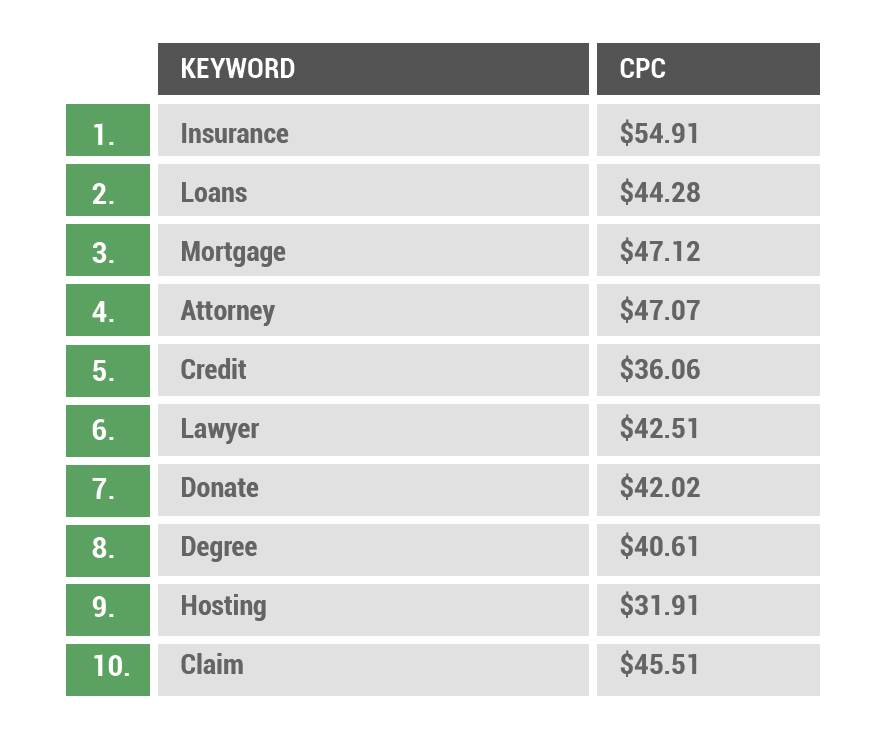 Ref: https://www.wordstream.com/articles/most-expensive-keywords
Ref: https://www.wordstream.com/articles/most-expensive-keywords
You’ll notice that most of the industries listed in the search terms above are high-revenue industries, where natural market forces have driven CPC upwards; these businesses obviously have the advertising budget to keep outbidding their competition.
In other highly competitive areas such as plumbing, electricians, car mechanics, etc. The CPC can get up to $15 or so, but trades services aren’t willing to go much further per click, as the ROI just isn’t there to support spending any more.
How do I know if AdWords is right for me? How do I make it effective?
As we’ve said already, AdWords is not a one-size-fits-all option. You’ll need to keep a number of factors in mind when deciding to implement it, and to keep it ticking over while it’s running.
Points to consider include:
• How competitive is the target industry?
• What’s the overall search volume for my desired keywords?
• What’s the CPC?
• Do I have the time or budget to keep my campaign in the sweet spot?
• Do I know how to write and design effective ad and landing page content?
• What’s my target ROI?
• Do I want or need to pair AdWords with Remarketing?
Be honest with yourself, and if you can’t afford it, don’t do it.
AdWords WILL NOT WORK in a vacuum
Ok. Here’s the most important piece of advice we’ve got. If you’ve read this far, you’ve earned it!
AdWords will not work on its own. Like any advertising or marketing activity, it’s only one element within a much larger machine with many moving parts.
The biggest mistake businesses make is to believe the hype and start an AdWords account (or have an agency do it for them), only to realise a few months down the track that they aren’t making inroads.
Traction comes in waves, and it depends on multiple factors. Even the most lovingly created and nurtured AdWords campaign will fall flat if it isn’t supported correctly. If you’re going to pay for a radio, TV or print ad, you need a call to action, you need an overarching strategy, and you need to know what your objectives are.
AdWords is a tool for driving traffic to your website. Yes, it’s a good way of making your company visible in search results, but for the most part this is useless unless consumers are eventually coming back and making a purchase.
How do you compel someone to purchase? By offering a promotion, a unique selling proposition, a value add, or some other incentive. For this to work effectively, you need cohesive branding and marketing messages across all of your online channels.
If there’s one thing to take away from this article, it’s that AdWords is a great money-maker for advertisers, and for Google. But if all advertisers were a little more careful with how they spent their AdWords budgets and backed these campaigns up with solid strategy and creative work, there’d be a lot less wasted money going into Google’s pocket.
Want to know more? Do what everyone else does – Google it. Or get in touch with the Sketch Corp. team for some honest advice on what could work for you.

